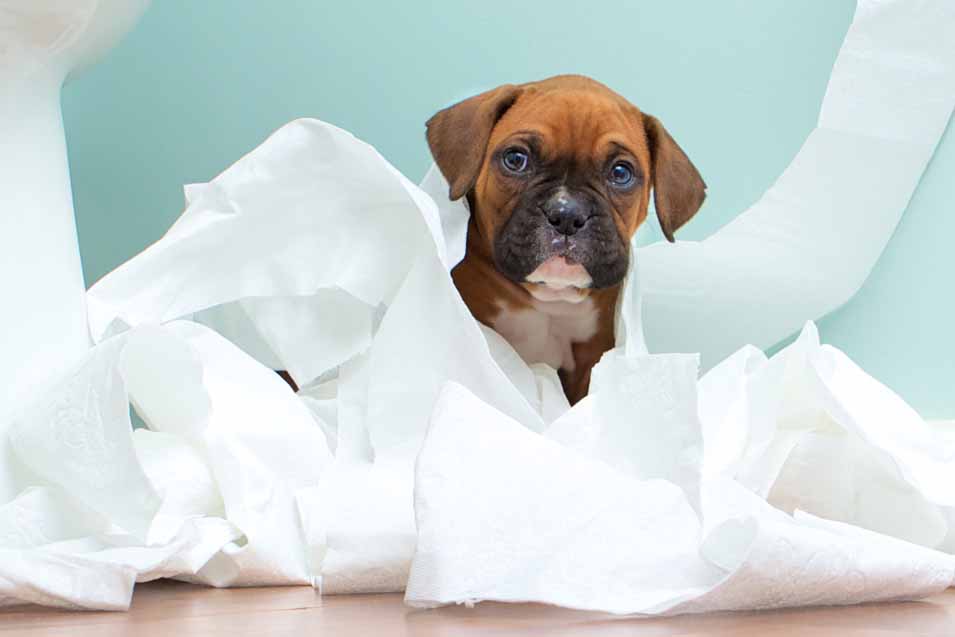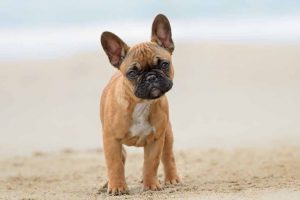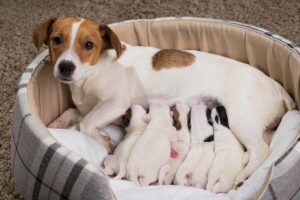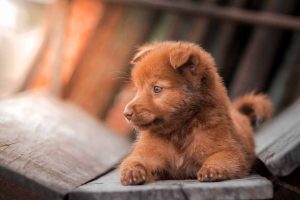Housetraining a new puppy can be lots of fun. Some puppies take to it like a duck to water while other puppies seem to need a little more time to fully grasp the concept. There are several different methods you can use to help your puppy learn where the appropriate place is to do his business. The good news is by using the right tools, exercising some patience, and being consistent with your training efforts, housetraining doesn’t have to be an unpleasant task. Recent research shows that one of the top reasons puppies are surrendered to shelters is repetitive mess making in the home. You can set your puppy up for success by deciding ahead of time what method you will use and beginning housetraining the minute your new puppy enters your home.
Best Methods for Housetraining
While there are many different approaches to teaching your pooch to do his business outdoors, there are two in particular that are the most popular: crate training and puppy pee pad training. Both methods have proven to be very effective. However, there is one critical component you must strictly adhere to in order for your pup to grasp the idea of eliminating outdoors: consistency.
Consistency is the key to all learning and is not just limited to dogs. People learn this way as well. To help your dog understand what is expected of him, it is important to stay on top of your chosen method, not deviating from the procedure. Routine reinforces learning, so it is important that you stick strictly to your chosen approach for best results.
Here are the two most popular housetraining approaches outlined in more detail:
- Crate training
Since many breeders start crate training as early as five weeks of age, many puppies are already quite familiar with the crate and view it as a place of safety and comfort. This works to your advantage as you want your puppy to see their crate as a refuge.
Why is this?
Well, there is no question that at some point in your puppy’s life he will need to be placed in a crate, often for his own safety. But when it comes to housetraining, there is an added advantage to your puppy viewing his crate as an awesome place to be. Dogs do not like to make messes in areas where they play, rest, or sleep. If your puppy views his crate as his own special area reserved for relaxation, naptime, and special treats, he will automatically view it as a place that he wants to be kept clean. This first step is key to reinforcing your success in teaching housetraining.
With this in mind, the size of the crate you select for housetraining is important. If you select a crate that is too large, your puppy will section his crate into an area for sleeping, play, and fun, and an area to be used for a potty. This is counterproductive to your efforts. To select the correct crate size, you want a crate that is large enough for your puppy to stand up, turn around, and lay back down, but that doesn’t offer much more room than that. If you pooch has room to actually walk around inside the crate, the crate is too large, and you need to purchase a smaller size.
If crate training is your method of choice, there are some things that you will need to keep in mind. Don’t keep your puppy in their crate for prolonged periods of time. Puppies can typically hold their bladder for the same length of time as their age in months, but particularly when a puppy is very young, you don’t want to put this theory to the test.
When you put your puppy in his crate, be sure to include something to keep him occupied like a raw meaty bone or a special toy. This will help alleviate boredom. The higher value, the better when it comes to crate time as it will help your puppy to see that going in his crate equates to special rewards and lots of fun and will help support the learning process. Your puppy will tire of playing or chewing after a time and will then nod off for a little nap. After an hour to an hour and a half has passed, open your puppy’s crate and take him outside to the area where you want him to learn to do his business. Remain outside until your dog has both peed and pooped. Each time your puppy does the correct thing in the correct place, praise your puppy lavishly. It’s party time! Your puppy will soon associate doing his business in the correct place outside as something that is very pleasing to you and will start to repeat the behavior more frequently.
You may find that your puppy does not need to use the bathroom as frequently as every few hours, and if so, that is perfectly fine. A pattern will emerge as to how long your dog can hold his bladder, and you can adjust your schedule accordingly.
Bear in mind that it takes far more than one successful potty break for your puppy to get the idea. You will need to repeat this process many, many, many times before you build to the level of consistency you will be looking for.
If periodically there are accidents in the house or in the crate, do not scold your puppy. Your puppy will not understand why you are upset or why he is in trouble. Worse still, he could start to associate his crate as a place where he gets yelled at which could cause him to regress in his crate training.
Puppies who are learning the crate training method of housetraining should also be crated overnight. If you hear your puppy scratching and whining in his crate during the night, you will need to be prepared to get up to take your puppy outside. This typically only happens when your puppy is quite young and doesn’t have the bladder to capacity to go through the night without urinating once or even several times. This is where patience is key. You will lose some sleep in the initial training days, but you will reap great rewards in a short amount of time if you are persistent.
For best results, use the crate any time you cannot provide active supervision as well as overnight. Any opportunity for an accident in the house can set training efforts back, so while it isn’t a big deal if it does happen, you will want to avoid it as much as possible.
- Puppy Pee Pad Training
Puppy Pee Pad Training is also a great way to teach your dog to use the outdoors as a bathroom. However, more supervision is required for this method.
Puppies have to use the bathroom just after waking up, after a full meal, and after play time. Placing puppy pee pads in your puppy’s main living area teaches the puppy that that is the specific place he is supposed to go when the urge strikes to urinate or defecate.
Puppy pee pads are also used by breeders in the early days of puppy training, so this method has the advantage of being something a puppy is already familiar with, so little effort is required to teach the puppy where he needs to go when he needs to use the bathroom. You will need to place pee pads in all of the key areas in your home, so your puppy will not get “caught short” and end up using the floor.
There are a few disadvantages to using puppy pee pads. First of all, puppies cannot distinguish between a pee pad and a blanket, towel, area rug, or piece of clothing left on the floor, so you may discover your puppy pees on things that he was not intended to. The best way to avoid this is to keep the floor clear of everything except the pee pads during the training process.
Another problem is the fact that you will have to teach housetraining in two different steps. The first step is teaching your puppy to use the pee pad, but you then need to transition the puppy from the pad to the outdoors which can be a challenge for some puppies to understand.
Puppy pee pads are easy to clean up; you simply pick them up and toss them in the trash. However, they can be expensive; especially if you have a large breed puppy who goes through many of them in a day. Add to the expense the fact that many puppies like to play with and tear their pee pads, and you’ve got a little added mess on your hands to deal with.
However, if you cannot be home all day, and you plan to leave your puppy in a pen to provide ample room for play, napping, and a separate area of pottying, you can’t beat puppy pee pads. They are a great solution for working professionals as well as for times when getting your dog outdoors might be impossible such as during winter storms, heavy rain, or even when at a hotel on an upper level floor. You can also use them with geriatric dogs who are sometimes “caught short” or who have difficulty navigating stairs without assistance.
Other Important Factors
Of course, every training method must be reinforced by other external factors. There are additional things that you can do to help your puppy with the training process.
One of the most important things to remember is that during training and even after your puppy has started to consistently “ask” to be taken outdoors to do their business, you will still have accidents periodically. The learning process is often fraught with setbacks, so be prepared for this and maintain a positive attitude. Never, ever scold your puppy for an accident but be quick with praise and even treats when your puppy makes the choice to do his business outdoors. You want to reward the good and ignore the not so good as much as possible. Puppies respond exceptionally well to positive reinforcement, so you will find this approach works very well for you.
Secondly, cleaning up any messes with an enzymatic cleaner formulated for pet messes is key. Puppies will continue to gravitate to areas that smell like urine or feces to “mark” them again. Always bear in mind that your puppy’s nose is far more sensitive than your own, so even if you have cleaned the spot, and it passes your own smell test, it might still smell fragrant to your pooch. Or worse…it may smell faintly, and your pup will feel the need to intensify it with a reapplication of urine or feces. You can purchase an enzymatic cleaner such as Odoban or Nature’s Miracle or simply make your own using the ingredients you already have in your cupboard such as white vinegar, Dawn dish soap, baking soda, hydrogen peroxide, and good old-fashioned H20.
Thirdly, supervision is key. Puppies are not always consistent in their bathroom habits when they are young. While we know certain times when we can expect a puppy might need to be taken outdoors, other times they can take us completely by surprise.
Part of supervision involves learning the typical signs a puppy exhibits prior to a bowel movement or pee. If you see your puppy circling around, acting excessively hyper, or digging at something, chances are quite good that it’s time to go outside for a potty break. Simply pick your pooch up and head outdoors. Make sure to praise your pup for a job well done when he does his business outside.
Be sure to give your puppy frequent opportunities to go outside. It is far better to go out once an hour and have your puppy not need to use the bathroom each time than it is to go too long between visits to the outdoors and have an accident in the house.
It is also a good idea to carefully control when and how much your puppy eats. High quality nutrition will limit your pup’s bowel movements to one in the morning and one night in most cases. Always keep in mind that after a meal or even a training session where your puppy gets a lot of treats, he will need to go outside to relieve himself or eliminate his bowels. Your feeding schedule will act as a guide to remind you when to take your puppy outside for a pee and poop break.
How Long Will the Housetraining Process Take?
The housetraining process is difficult to pinpoint to a specific amount of time since each dog is unique and learns according to their own timetable. For some puppies, it may take as little as a few days to understand the concept. Still other dogs take many, many months. There are also certain breeds who are particularly headstrong who will take a lot of extra patience and consistency to guide through the process and yield the desired result.
Yes, the housebreaking process can be quite a journey! Stay consistent and keep a positive attitude and your pooch will be housetrained in no time at all.






